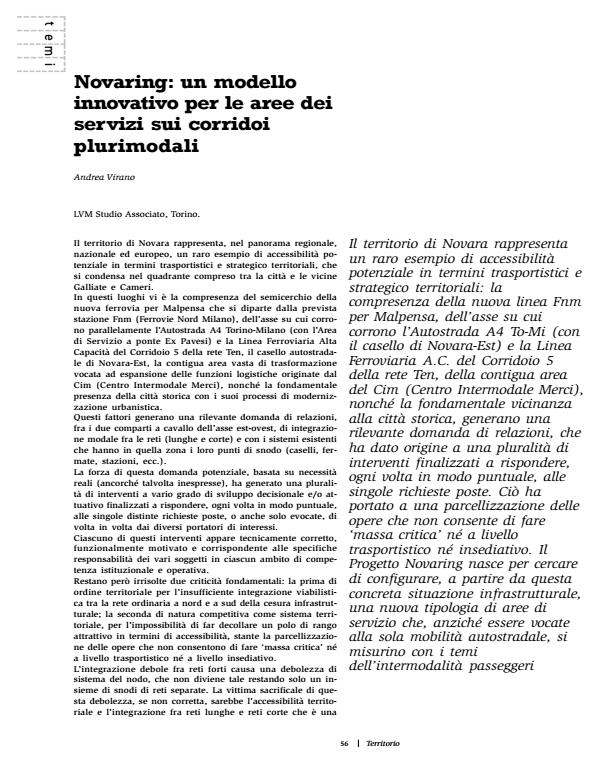Novaring: un modello innovativo per le aree dei servizi sui corridoi plurimodali
Titolo Rivista TERRITORIO
Autori/Curatori Andrea Virano
Anno di pubblicazione 2009 Fascicolo 2009/48
Lingua Italiano Numero pagine 4 P. 56-59 Dimensione file 541 KB
DOI 10.3280/TR2009-048009
Il DOI è il codice a barre della proprietà intellettuale: per saperne di più
clicca qui
Qui sotto puoi vedere in anteprima la prima pagina di questo articolo.
Se questo articolo ti interessa, lo puoi acquistare (e scaricare in formato pdf) seguendo le facili indicazioni per acquistare il download credit. Acquista Download Credits per scaricare questo Articolo in formato PDF

FrancoAngeli è membro della Publishers International Linking Association, Inc (PILA)associazione indipendente e non profit per facilitare (attraverso i servizi tecnologici implementati da CrossRef.org) l’accesso degli studiosi ai contenuti digitali nelle pubblicazioni professionali e scientifiche
Novaring: an innovative model for service areas in multimodal corridors - Novara is a rare example of potential accessibility in transport and strategic terms. The presence of the new Ferrovie Nord Milano railway line to Malpensa airport alongside the axis on which the Turin-Milan A4 motorway (with the Novara- Est tollgate) and the high-capacity railway line of Corridor 5 of the TransEuropean Network (Ten) run, and their coexistence with the adjacent area of the Intermodal Goods Centre and, crucially, with the nearby historical centre, has given rise to a significant demand for routes and services which in turn has occasioned a plurality of measures to meet the individual requests put forward. This has led to a parcelling out of works which prevents the development of ‘critical mass’ in both transport and settlement projects. The Progetto Novaring emerged out of this specific concrete situation in an endeavour to design new types of areas of service which, rather than focus solely on motorway traffic, would also tackle the issue of passenger intermodality.
Andrea Virano, Novaring: un modello innovativo per le aree dei servizi sui corridoi plurimodali in "TERRITORIO" 48/2009, pp 56-59, DOI: 10.3280/TR2009-048009